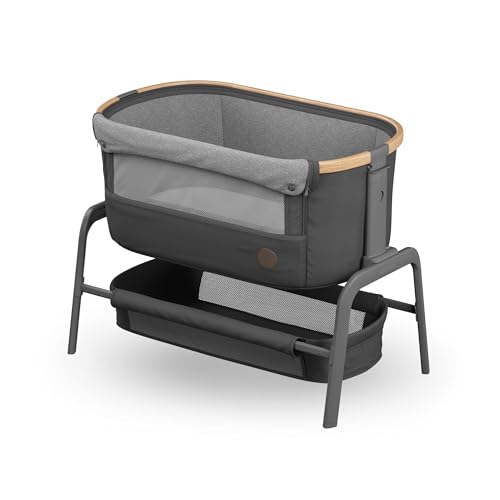15 Baby Cot To Bed Benefits Everybody Must Be Able To
Transitioning from Baby Cot to Bed: A Comprehensive Guide for Parents
The journey from a baby cot to a bed marks a substantial milestone in a child's advancement. It signifies independence and an action towards maturing. Nevertheless, continue reading this can often be daunting for both parents and kids. Comprehending the process, the right timing, and how to make the shift smoother can considerably assist in this journey. This post explores the vital to think about when transitioning your kid from a cot to a bed, including common FAQs, tips, and a structured plan to ensure the procedure is as seamless as possible.
Why Transition from a Cot to a Bed?
Developmental Milestones
Transitioning to a bed is typically prompted by a number of factors:
Physical Growth: As children grow, they outgrow their cots. The average size for a convertible cot is normally suggested for babies up to 3 or 4 years of ages.
Cognitive Development: As young children end up being more curious and knowledgeable about their environments, they might try to climb up out of their cots, positioning safety risks.
Potty Training: Once a child is potty trained, they might require easier access to the bathroom, which a bed can facilitate.
Brother or sisters: The arrival of a brand-new brother or sister can also require this shift, as the cot might require to be freed up.
When to Make the Transition
There is no one-size-fits-all response to when a child must transition from a cot to a bed. Nevertheless, here are some indications that it might be time:
- Climbing Out: If the child is trying to climb up out regularly.
- Age Consideration: Many specialists advise this transition around the age of 2 to 3 years, although every kid is distinct.
- Need for Independence: Children may express a desire for a big-kid bed.
Types of Beds Suitable for Toddlers
Not all beds are developed equivalent when it pertains to kids. Here's a breakdown of suitable bed types:
Bed Type
Description
Pros
Cons
Toddler Bed
Smaller, lower to the ground, frequently with side rails.
Size-appropriate for toddlers; stability.
Minimal life expectancy as they outgrow rapidly.
Single Bed
Standard size bed indicated for older children.
Lasts longer; can be utilized for many years.
Might be too huge for a toddler; threat of falling.
Convertible Crib
Crib that changes into a toddler bed.
Versatile; conserves cash in the long run.
Can be costly; some might not use full-sized choices.
Loft Bed
Raised bed with space underneath for play or storage.
Takes full advantage of area; fun for kids.
Not suitable for really children; security concerns.
Actions to Transition Smoothly
Transitioning to a bed can be simplified with cautious planning. Here's a detailed guide:
1. Prepare the Space
- Select a Location: Decide where the bed will be placed.
- Childproof the Room: Since young kids are naturally curious, ensure that furniture is steady, sharp edges are covered, and harmful items are out of reach.
- Keep Familiar Items: Retain favorite toys and bedding to provide comfort in the new environment.
2. Present the Bed
- Involve Your Child: Let your child help select out their bed or bed linen to create enjoyment.
- Explain the Transition: Make them understand that they are ending up being a huge kid by having a big-kid bed. Usage motivating language.
3. Make the Swap
- Bedtime Routine: Keep the bedtime routine consistent. This produces familiarity and convenience throughout the transition.
- Assistance: Offer them reassurance but prevent being excessively protective; it's essential to motivate independence.
4. Address Fears and Concerns
- Talk About Fears: Children may have fears of falling or the dark; discuss these freely.
- Reinforce Safety: Use guard rails on the bed initially and explain what to anticipate during the night.
5. Monitor and Adapt
- Be Patient: It might require time for your kid to adjust totally.
- Stay Consistent: Maintain the nighttime regimen, even when problems emerge.
Frequently Asked Questions Regarding Transitioning from Cot to Bed
Q1: How long does the shift from a cot to a bed normally take?
A1: The shift can vary substantially among kids— varying from a few days to a couple of weeks— as they adapt to sleeping in a new area.
Q2: Should I buy a special young child bed?
A2: Investing in a young child bed can make the transition much easier considering that they are developed with safety in mind; nevertheless, if you prefer to go straight to a single bed, that can work too with the right safety procedures.
Q3: What if my child keeps rising?
A3: This is regular! Encourage them to stay in bed and establish positive reinforcement by rewarding them for remaining in bed through the night.
Q4: Is it fine to shift to a big bed too early?
A4: Transitioning too early can cause sleep disruptions. It's necessary to assess the preparedness of the child based upon their signs and development.
Transitioning from a baby cot to a bed is a considerable step for both children and moms and dads. With thoughtful preparation and understanding of the child's requirements, moms and dads can make the shift smoother and more pleasurable. By acknowledging when to make the shift, comprehending the types of beds available, and maintaining a constant regimen, parents can relieve fears and foster a sense of security for their kid during this interesting brand-new chapter. Eventually, every kid is different, and persistence is type in making this journey a positive experience.
